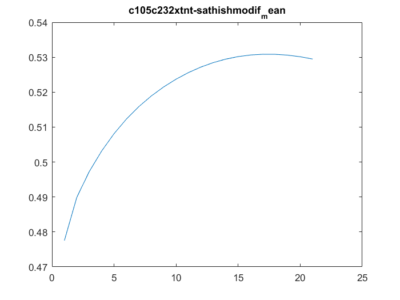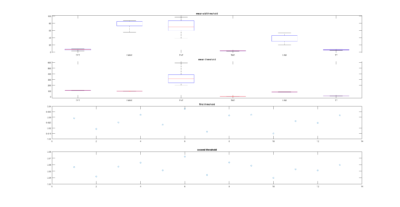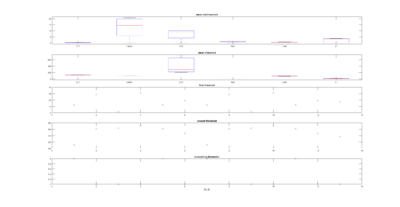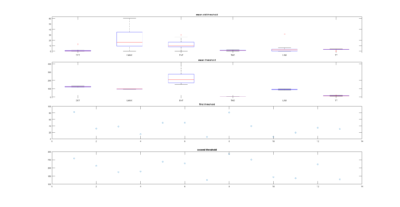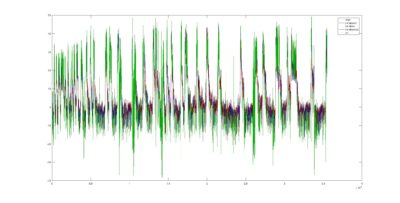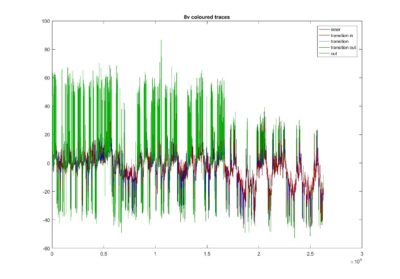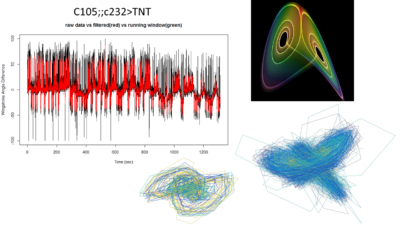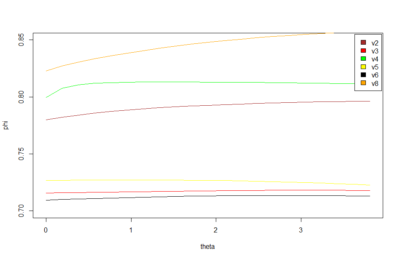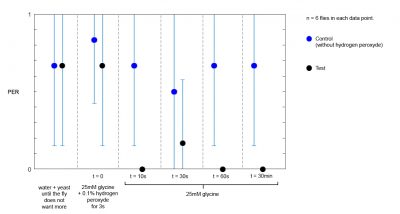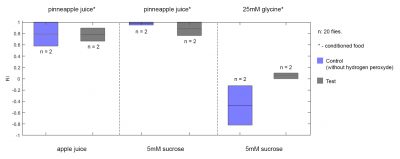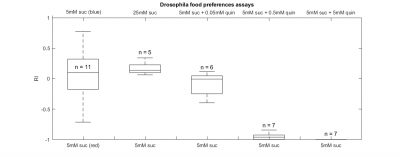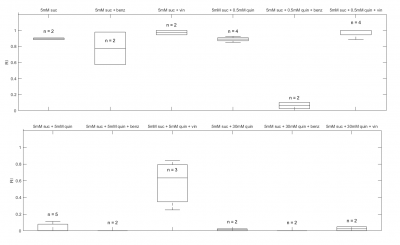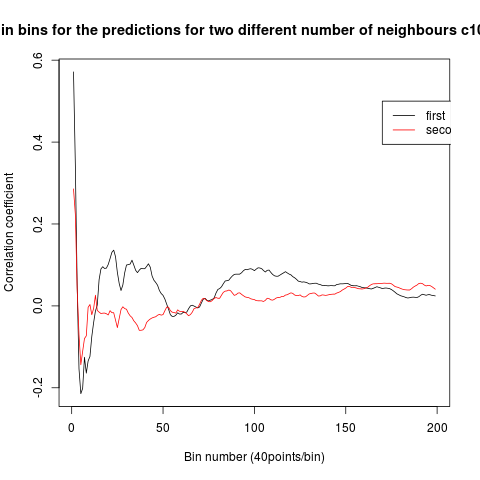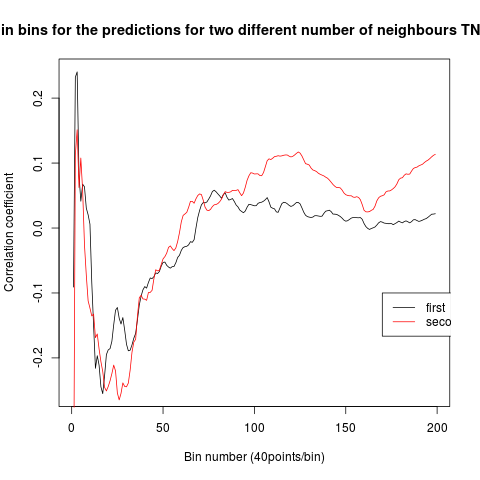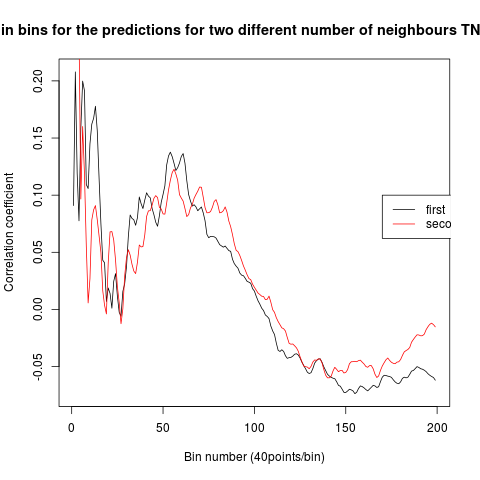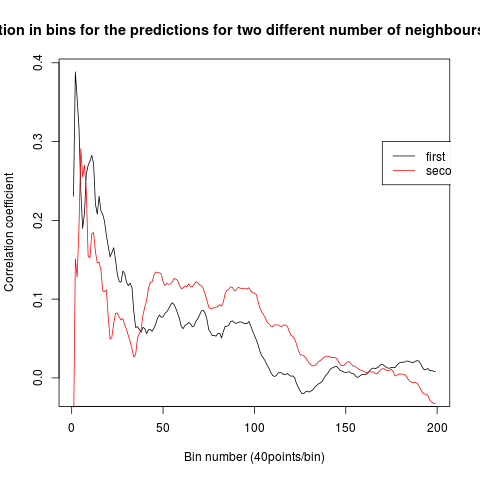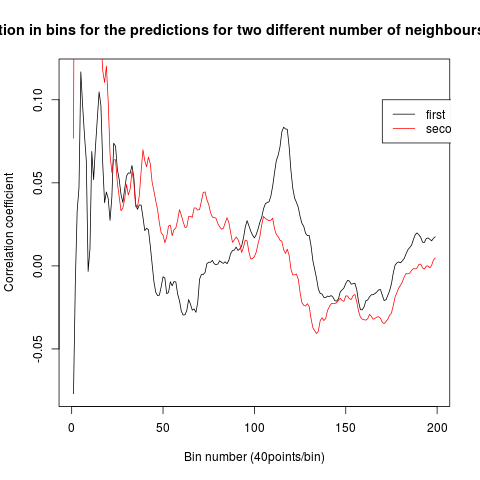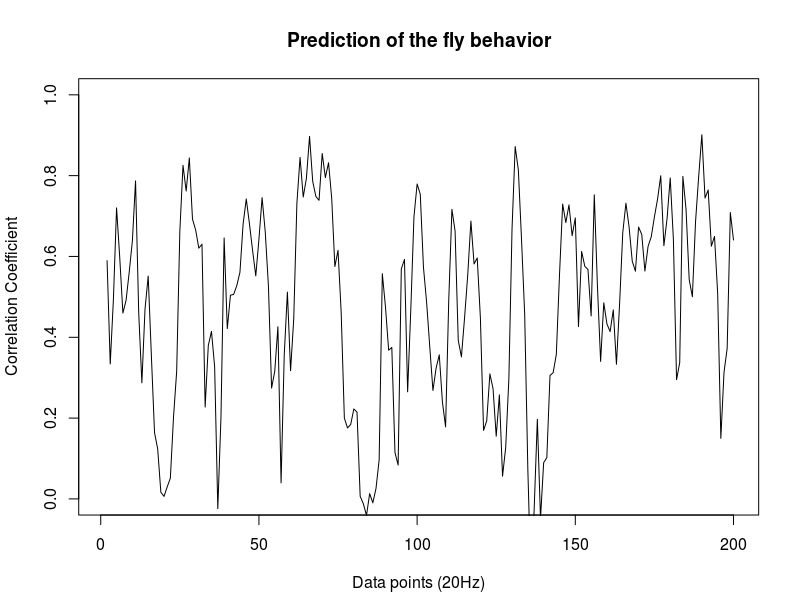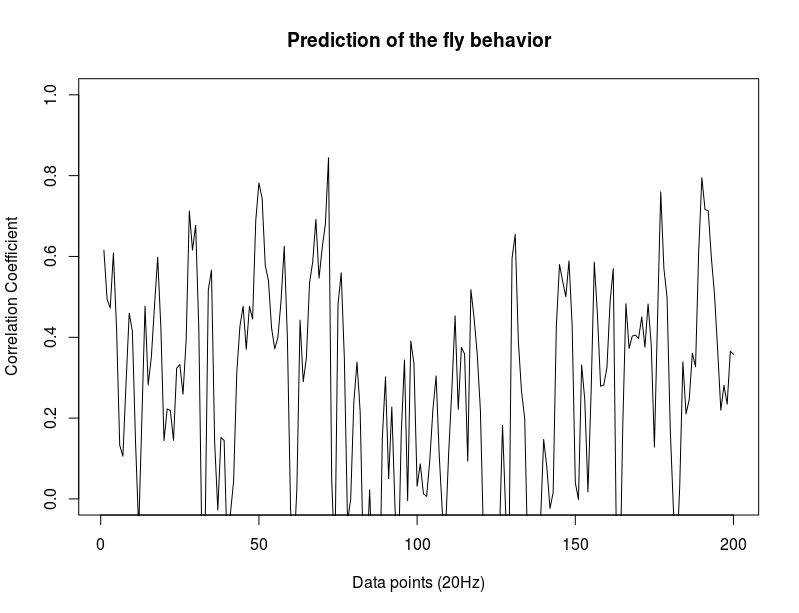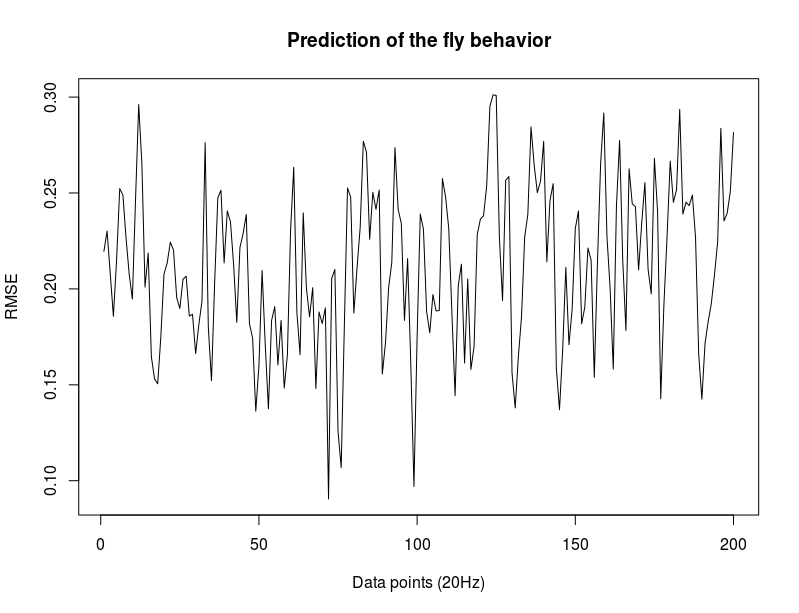All sathish data analysis
on Monday, November 20th, 2017 1:47 | by Christian Rohrsen
This are the results of all of the flies analyzed from Sathish. I just need to know the frequency of the acquisition to exclude the ones that are below 6 minutes.
Category: flight, Spontaneous Behavior, strokelitude, WingStroke | No Comments
Sathish data
on Monday, November 6th, 2017 1:37 | by Christian Rohrsen
I have analyzed the c105+c232 > tnt data from Sathish. There are a total of 43 flies, although many of them only flew for a few minutes, and therefore should be discarded. Below all of the individual fly scores. I need to analyse now the other groups. This is btw the modified data set, whatever that means for Sathish.
This is a video of the projection from the torque data from Maye et al. 2007. The spikes are not that well sorted in this case as in the Strokelitude. I guess this is because the spikes do not look so smooth.
Category: flight, Spontaneous Behavior, strokelitude, WingStroke | No Comments
Recurrence quantitative analysis
on Monday, October 30th, 2017 11:43 | by Christian Rohrsen
This is an example of a recurrence plot analysis. In the first graph is shown in single point in time in the optimal embedding dimension and the distance to the other points. For the recurrence plot analysis it is needed to put a threshold to make it binary. This is the second graph. From this second graph one can count many parameters like determinism, laminarity and so on. From what I see, the plots from the Strokelitude as well as Bjoern´s flight simulator in Maye et al 2007 show similar pattern (kind of crosses with vertical and horizontal lines).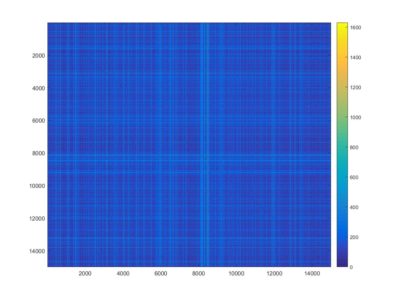

This is a measure of the Recurrence Quantitative Analysis of different groups. Recurrence threshold is a tricky and to some extent subjective measure, so this is why I tried two different ones.
DET: recurrence points that form a diagonal line of minimal length, the more diagonal, the more deterministic.
LMAX: Max diagonal line length or divergence. Sometimes considered as an estimator of max. Lyapunov exponent
ENT: Shannon entropy reflects the complexity of the system
TND: info about stationarity (trend)
LAM: Laminarity is related to laminar phases in the system (intermittency). It is tallied as vertical lines over a threshold.
TT: Trapping time, measuring the average length of vertical lines. Related to laminarity.
Automat
Openloop
Uniform
Category: flight, Spontaneous Behavior, strokelitude, Uncategorized, WingStroke | No Comments
More on the attractor
on Monday, October 16th, 2017 2:26 | by Christian Rohrsen
Video of the attractor projected from a chunk of flight trace. Here one can see the difference in the trajectories of up- and down spikes. So here is another way of spike sorting by the way :).
Coloured traces depending where the locate in the attractor projection. Green means that they lie outside and when they stay with the PCs around zero its in red. The fly1r above does not look so clean as the v8 fly below (the cleanest measure I have)
Category: Spontaneous Behavior, strokelitude, WingStroke | No Comments
SMAP results
on Monday, October 9th, 2017 2:34 | by Christian Rohrsen
These are the results of the SMAP for the TNTxWTB. I also have done a few for the c105;;c232xWTB but there is not much to say. I would say that the cleanest lines show a bigger slope, but prone to subjectiveness.
In addition, I have done some animations of the attractors that I have posted on slack because of size.
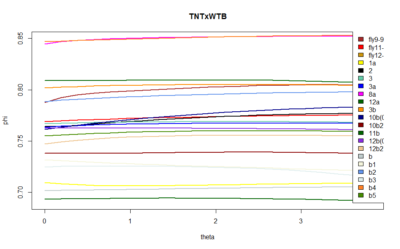
Category: flight, genetics, R code, Spontaneous Behavior, strokelitude, WingStroke | No Comments
Attractors for c105;;c232>TNT
on Monday, October 2nd, 2017 5:35 | by Christian Rohrsen
This is what I showed about one fly from this line showing the attractor.
This graph is what I forgot to show in the lab meeting. There are the 6 best traces from this same line. All of them selected ad hoc subjectively. The three best of them to my eyes are exactly the three above in the graph (v8-this one is the one shown in the picture with the attractors-,v4,v2). What does this means? the ones with better traces (subjectively) have higher offset in the phi, this means that they are more predictable overall (maybe because more resolution?). In addition, they show higher slopes which means more nonlinearity.
Category: flight, Spontaneous Behavior, strokelitude, WingStroke | No Comments
Drosophila behavioural flexibility towards food (3)
on Saturday, February 11th, 2017 10:21 | by André Silva
This time I tried to induce a kind of Garcia effect (eating something, feeling sick and then avoiding eating that again) in Drosophila. As one can see in the video below, Drosophila show inhibited proboscis extension response (PER) right after the onset of the US (intestinal discomfort).
However, the conditioned response is extinguished after several hours. I tried to use groups of 20 starved flies on yeast+water for 2h, food + 0.1% hydrogen peroxyde for 1h, starving with nothing for 1h (always inside vials), and then testing with conditioned food against another food for 2h (inside Petri dishes). It didn’t work: in the end they show the same preference as controls (without hydrogen peroxyde). I tried to condition sucrose, glycine, pineapple juice (and then test against apple juice) and nothing, the flies avoid at first but once the swelling goes away, they forget or don’t associate anything bad or sufficiently bad with that food anymore, and continue to prefer it.
I also confirmed the PER suppression following conditioning with quinine reported in [C. Keene A, Masek P. Optogenetic Induction of Aversive Taste Memory. Neuroscience. 2012;222:173-180]. However, it is also extinguished minutes (~30) after the conditioning, as their results also show (in my case, I used sucrose instead of fructose):
(my results:)
Category: Food preference, Spontaneous Behavior | No Comments
Drosophila behavioural flexibility towards food (2)
on Thursday, February 2nd, 2017 9:49 | by André Silva
This time I tested how the behaviour changes with the proportion between the positive stimulus (sucrose) and the negative stimulus (quinine) and how it changes with the presence of a positive odour (vinegar) or a negative odour (benzaldehyde).
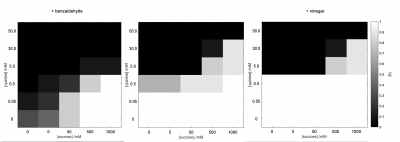
Category: Food preference, Spontaneous Behavior | No Comments
Drosophila behavioural flexibility towards food
on Saturday, January 28th, 2017 12:05 | by André Silva
Why does one choose a burger over a carrot? How much is it possible to change that choice? What can Drosophila tell us about it?
I wanted to study Drosophila spontaneous behaviour regarding their food preferences and how malleable it is, so I can then try to condition it – and one should notice that those are “preferences” and therefore not neutral CS to begin with, as usual.
For that I used wild type Drosophila starved for 24 hours.
Drosophila likes the sweetness and the nutritional value of sucrose and does not like the bitter taste of quinine. Vinegar is a well-known attractant and benzaldehyde a well-known repellent.
To test the food preferences I simply add different food colouring to the food, test the flies in Petri dishes with alternated 10µL food drops and then, after 2h at 25°C and without light, I freeze them and count the number of flies based on the colour of their abdomen:
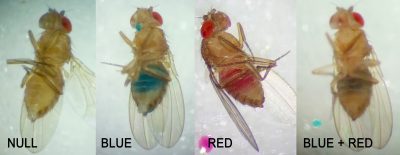
Here I present my first results:
(n = number of trials, each using 40 flies.)
As an illustration, here I have a short video showing a few flies during their initial food exposure:
And here the results with food in the presence of odours:
(The odours were placed in a small piece of filter paper inside the Petri dish.)
Next I would like to see if I can change their preferences (using these foods or sucrose vs fructose, etc.) through conditioning (as in the Garcia effect). Suggestions are welcomed.
Category: Food preference, Spontaneous Behavior | No Comments
Cumulative bins, starting at zero and normalizing
on Monday, April 4th, 2016 3:04 | by Christian Rohrsen
In the last meeting Björn proposed to do correlations of cumulative increasing bins. He said to do that taking the zeroth point (last library point where prediction is still not done) and use it for having a potential 1 of correlation coefficient at the beginning. I could not do that because I didnt save the zeroth points, and this will be a bit tedious and confusing considering that many flies were tested and probably the order is not 100% known. Thus, I just did the bins skipping this zeroth point. After all, we should see something similar with this one. First two graphs: c105;;c232>TNT (first and second prediction point), second: WTBxTNT, third: WTBxc105;;c232.
Examples of how each of the flies look like. So they are basically cumulative bins with each single fly (each in different colour). Just to have a hint how does the singularity looks like. 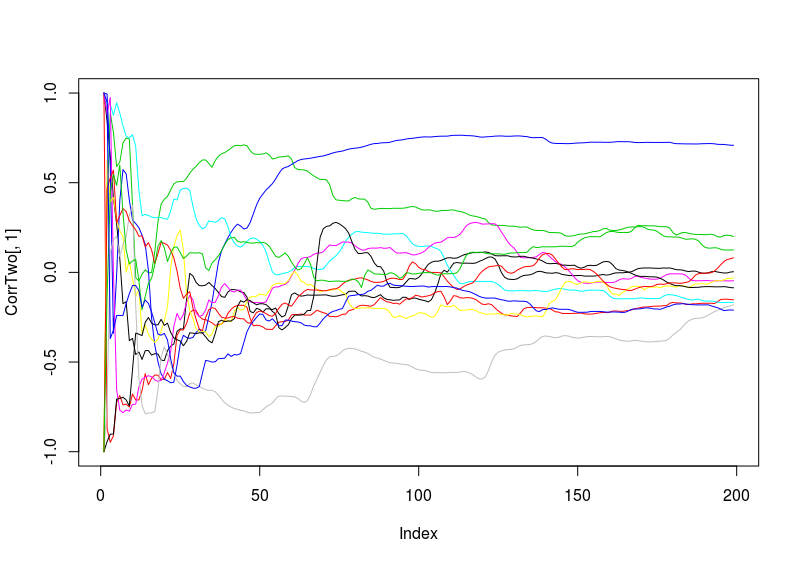
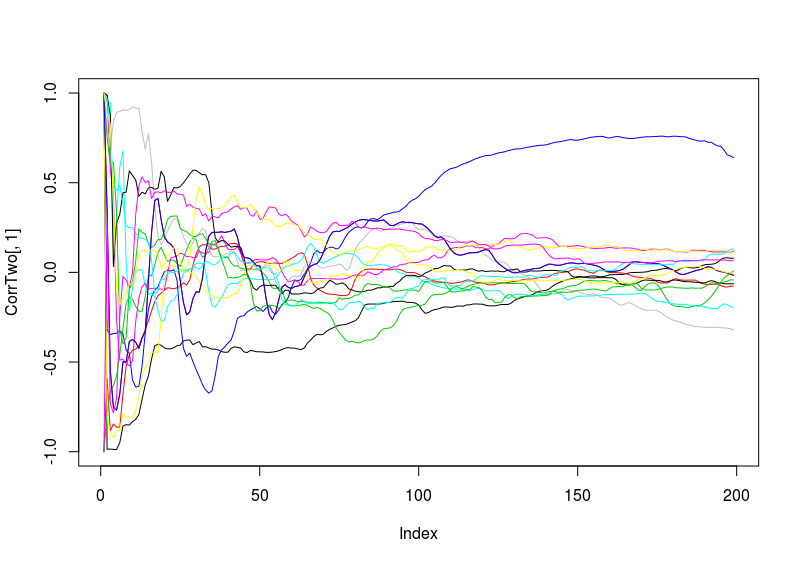
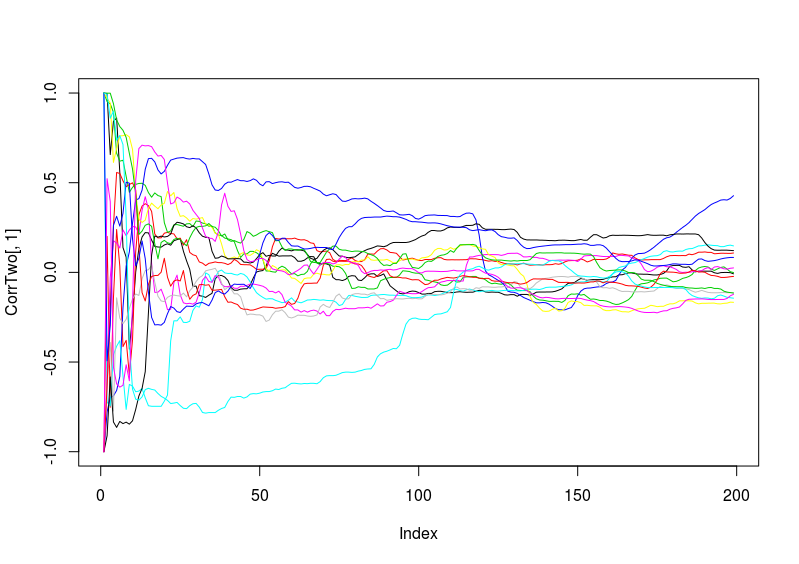 Second thing I did is normalize the to have a range from -1 to 1 all of them (I have to double check the range in the script) and also setting them at a starting point of zero. I did this because we do not want to have differences in the correlation coefficient due to a different offset of the values of the wing beat and neither because of the starting point (if the fly was already flying to the right full gas, then it could be that it has an influence in the following prediction).
Second thing I did is normalize the to have a range from -1 to 1 all of them (I have to double check the range in the script) and also setting them at a starting point of zero. I did this because we do not want to have differences in the correlation coefficient due to a different offset of the values of the wing beat and neither because of the starting point (if the fly was already flying to the right full gas, then it could be that it has an influence in the following prediction).
c105;;c232 –> first at starting at zero without normalizing and then with normalizing. The next is just the RMSE (not so important).
Category: R code, Spontaneous Behavior, strokelitude, WingStroke | No Comments


